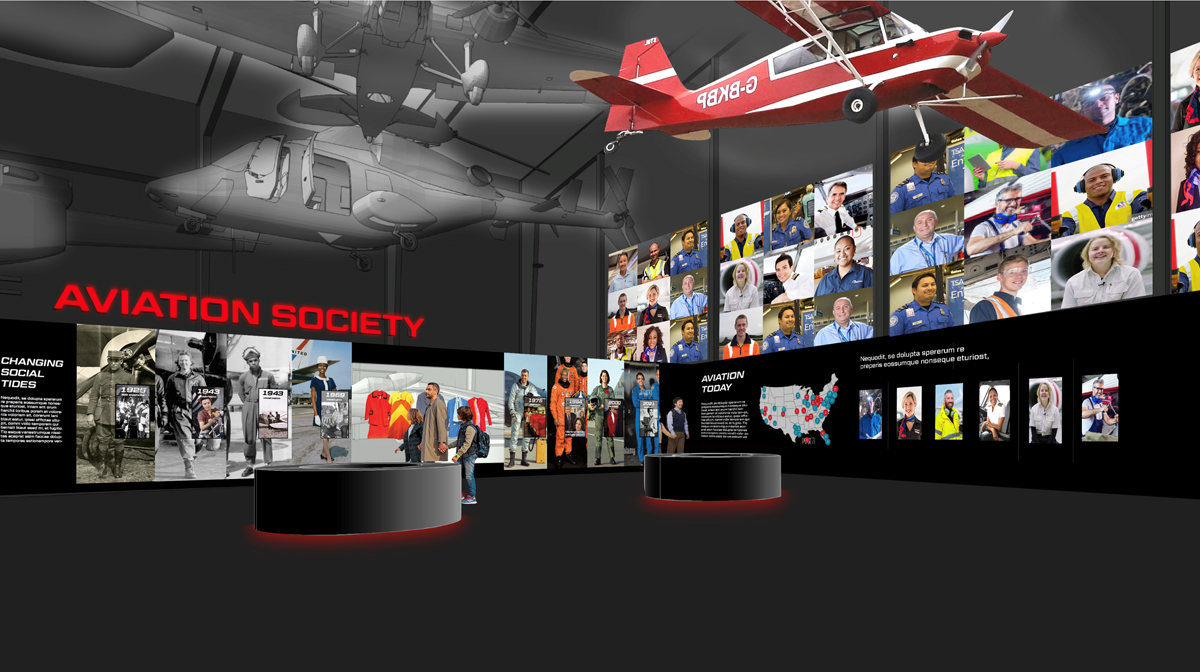Up, Up, and Away: Sullenberger Aviation Museum Encourages Visitors to Explore New Heights
SHARE
After 31 years of helping imaginations soar, the new Sullenberger Aviation Museum is poised to redefine what a museum can be. By celebrating the history of flight, the innovation center aims to inspire, educate, and elevate the future of aviation in North Carolina and beyond.
Sullenberger Aviation Museum, previously known as Carolina Aviation Museum, was founded in 1992 by aviation enthusiast Floyd Wilson. Alongside his wife, Floyd worked closely with the Charlotte Douglas International Airport to rescue and restore aircraft that were in danger of deteriorating. “That was the impetus of the museum,” says Stephen Saucier, president. “The initial goal was to preserve aviation history and it quickly proved to be a magnetic idea, attracting aviation enthusiasts such as active and retired pilots, military members, and technicians, to join together for a common passion.”
Today, the museum is home to an extraordinary collection of aircraft, including over 45 planes, helicopters, and drones, as well as artifacts from the dawn of aviation. The facility maintains an impressive collection of military, commercial, and civilian planes, as well as books, periodicals, photographs, and uniforms that help tell the story of the history of flight. “We have planes that display the early phases of aviation, including a replica of the Wright Flyer, to drones that delivered medical supplies to hospitals during the COVID-19 pandemic. All of these aircraft are a physical representation of the remarkable story and history of aviation and the impact that flight innovation has on our culture, economy, and daily lives.”
In 2011, the museum acquired the “Miracle on the Hudson,” an Airbus A320-2145 piloted by Captain C.B. “Sully” Sullenberger. The plane was carrying 150 passengers and five crew members in 2009 when it hit a flock of migrating geese causing both engines to shut down. In a story that captured the nation’s attention, Captain Sully made an emergency landing in the Hudson River, keeping all passengers and crew safe. “The historic flight still draws interest today,” says Stephen. “We not only celebrate the heroism displayed, but also use it as an opportunity to solidify our role as stewards of this important story in aviation history.”
Sullenberger Aviation Museum is dedicated to providing opportunities for STEM education to youth throughout North and South Carolina, partnering with schools and programs across the region to introduce content such as aviation, drones, design and engineering, modeling and 3D printing, computer science and coding, and much more to students who might not have those opportunities to connect to STEM education and careers in the technical fields. “Our goal is to tell stories of ingenuity and innovation by ordinary people and have students wonder - is this something I might want to do?” says Stephen. “We highlight the diverse career offerings in the field, and in doing so, create a portal of opportunity.”
In 2019, the museum launched its Lift Off Campaign, a capital project that will expand the campus and enhance outreach opportunities. “The whole community has rallied together to help bring the vision to life, including the state of North Carolina, Mecklenburg County, the City of Charlotte, and Charlotte Douglas International Airport, as well as corporate partners like TowneBank,” says Stephen. “The new facility will provide immersive and inclusive learning experiences and career development, and it will improve the economic vitality of Charlotte’s West End. It is truly for the people and by the people.”
Sullenberger Aviation Museum is set to reopen in 2024. Visit the website to sign up for their newsletter to stay up to date on current events and to learn more: SullenbergerAviation.org.

The museum will continue its mission to inspire, educate, and elevate through the expansion of immersive and inclusive learning experiences.

Sullenberger Aviation Museum is home to 45 planes, helicopters, and drones, as well as exhibits that help tell the history of flight.
